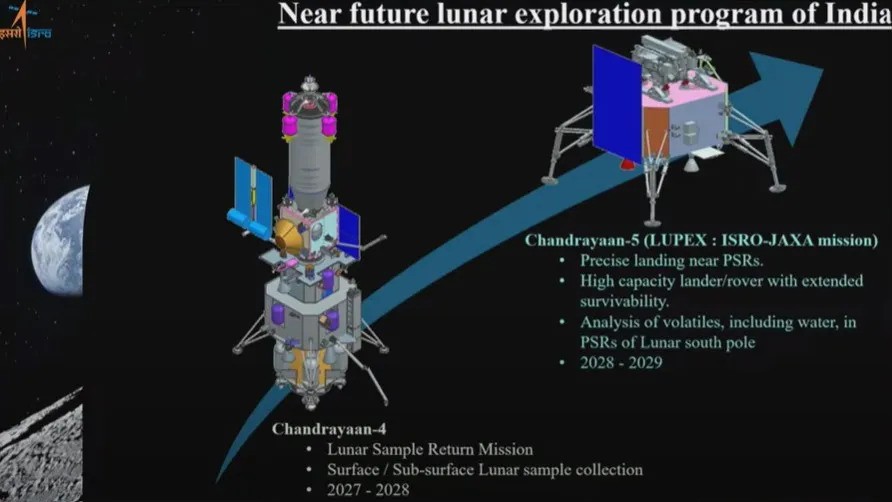India is preparing to launch the Chandrayaan-4 probe to the Moon. Like the previous one, its target will be the South Pole of our Moon, where it is possible to find water ice. However, this time the samples must be brought back to Earth to be studied in a laboratory.

India’s space ambitions
India’s Chandrayaan-4 lunar sample return mission plans to land between 85 and 90 degrees latitude in the moon’s southern hemisphere, followed by a joint landing module and lunar rover mission with Japan.
The Chandrayaan-4 mission will consist of two units launched by two separate rockets and will be sent to the South Pole region of the Moon, P. Veeramuthuvel of the Indian Space Research Organization (ISRO) told the International Astronautical Congress (IAC) in Milan on October 17.
The mission will aim to collect about three kilograms of samples near the South Pole, which is believed to have a water-ice cover around it. ISRO will need several new technologies, including the ability to scoop from the surface and drill to a depth of about two meters for subsurface sampling.
Purpose of the Chandrayaan-4 space mission
Research is currently underway to determine the final choice of landing site. ISRO officials had earlier said that the mission would be sent to Shiv Shakti Point, the landing site of Chandrayaan-3, at about 69 degrees latitude.
The mission will include landing on the Moon, taking samples, docking in lunar orbit, and safely returning to Earth with the samples. “This will also demonstrate our capability for the crew landing mission,” P. Veeramuthuvel said. Last year, India announced that it planned to land astronauts on the Moon by 2040.
The individual Chandrayaan-4 units will have a mass of about 4.6 tons each, for a total mass of 9.2 tons, each to be launched by an LVM-3 launch vehicle. The modules will dock in a geosynchronous transition orbit —using a circular route to the Moon, as with Chandrayaan-3 — and fly to the Moon as a single. The previous mission design included a single LVM-3 and PSLV launch vehicle for two launches.
P. Veeramuthuvel did not give a launch date or year, but the slides indicate that the launch will take place around 2027-2028.
The Chandrayaan-4 mission received approval in September. The launch of the Venus orbiter, the first manned space station module and a reusable launch vehicle were also approved last month.
Chandrayaan-5/LUPEX Mission
The Chandrayaan-5 mission, also known as LUPEX, a collaboration between ISRO and the Japan Aerospace Exploration Agency (JAXA), is also progressing.
The landing mission will also be aimed at the Moon’s South Pole at coordinates 89.45°S, 222.85°E, on an elevated ridge near Shackleton Crater. There are permanently shadowed regions nearby that can be explored by the mission’s lunar rover. The lunar rover will travel between 500 and 1,000 meters, taking measurements in situ, including identifying potential water and ice deposits.
India will provide the descent vehicle, mission planning and payload, while Japan will provide the launch vehicle, various payloads and the lunar rover. The payload will include GPR, a range of spectrometers and water analysis instruments provided by both parties.
According to P. Veeramuthuvel, Chandrayaan-5/LUPEX is scheduled to be launched in 2028-2029.
Provided by spacenews.com


